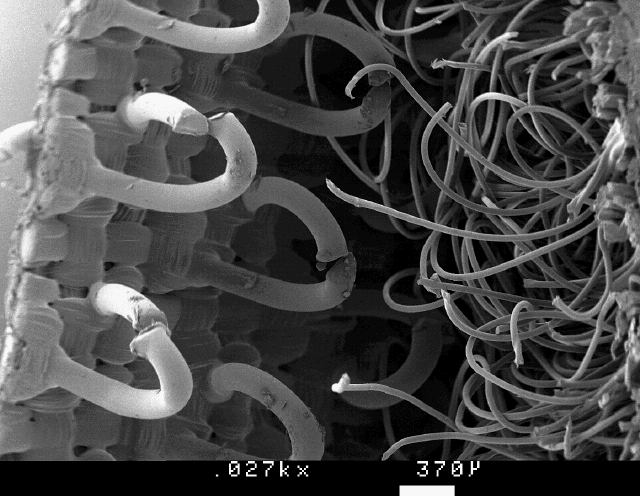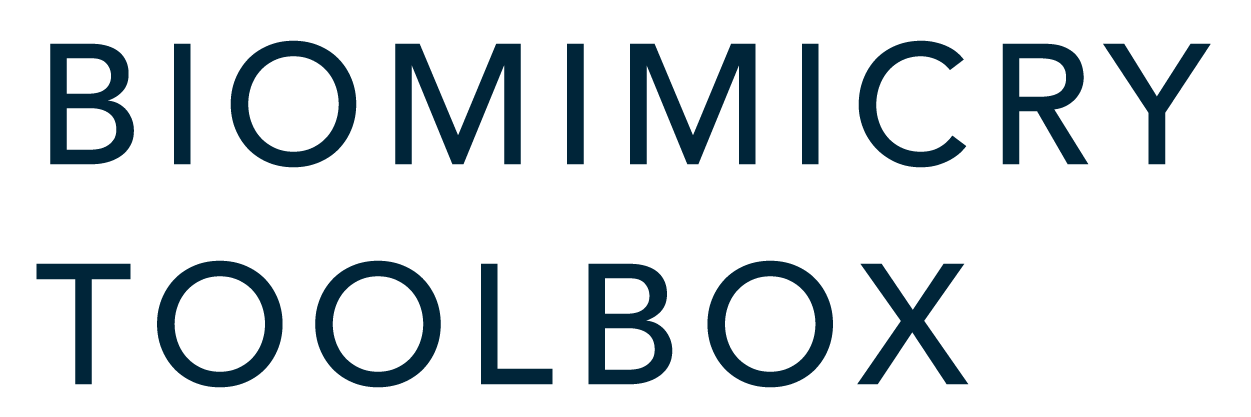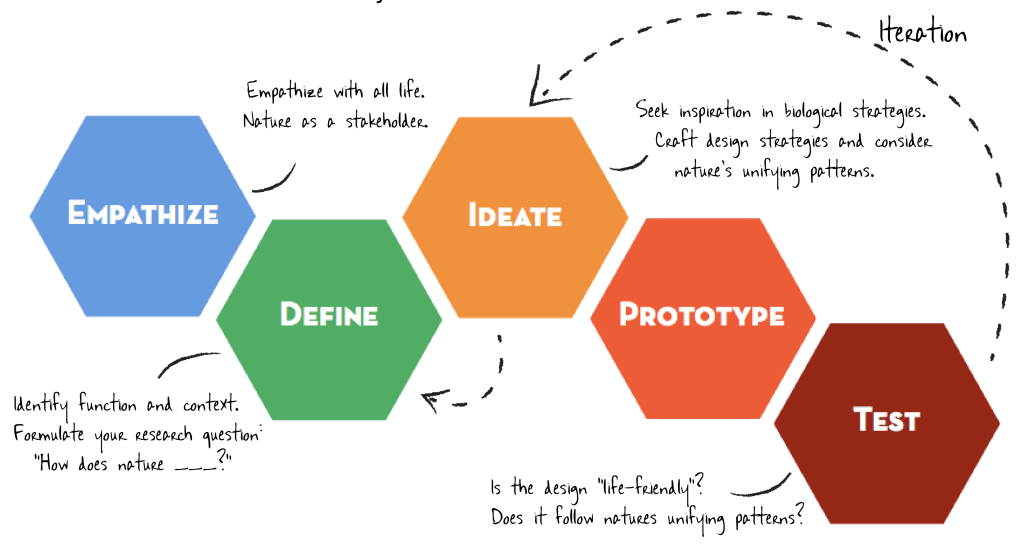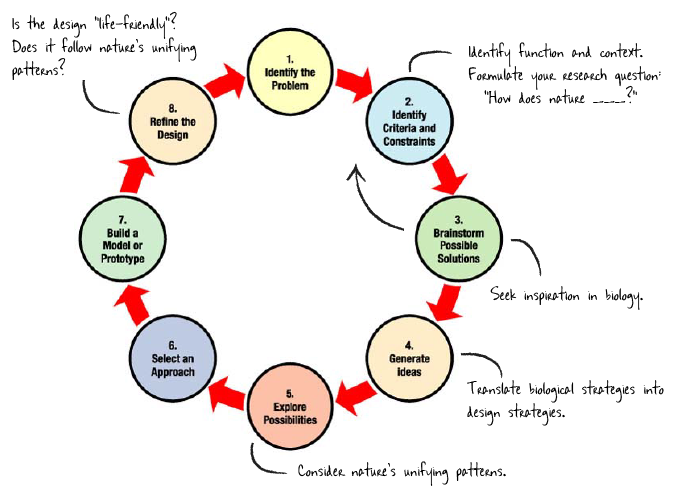Other Pathways to Biomimicry
The Biomimicry Toolbox focuses largely on a “challenge to biology“ approach to biomimicry: starting with a design challenge and actively seeking inspiration and models in biology to solve it. This type of approach is what’s most useful to those seeking biomimetic solutions to specific design problems or opportunities. But biomimicry can manifest and be practiced in other ways, too, especially once the core concepts and methods of the practice have become second nature.
Biology to Design
Sometimes biomimicry can occur when an innovator first notices an interesting mechanism or phenomena in the natural world and then identifies an application for it. A number of famous bio-inspired designs came about this way.
We describe this pathway as “biology to design” because it begins with the biological inspiration instead of a specific challenge. It’s a good reminder of the value of spending time outside observing and interacting with the natural world. As you build biomimicry habits of mind and become more attuned to the features and functions of living things, your visits with nature will become only more rewarding.
Biology to Design Examples

The story of the invention of Velcro® is a famous example of “biology to design.” Swiss engineer George de Mestral went for a hike with his dog one day. Later, as he was pulling burdock seeds from the dog’s fur, he realized the hooked barbs of the seed could be a model for a new type of hook and loop fastener.
Bringing Biomimicry Into Other Design Frameworks
Biomimicry concepts and tools can be utilized within a variety of design processes. Once you have a sense for what a biomimetic approach is, you’ll begin to see how this way of thinking and designing can be integrated into other design frameworks that may not have traditionally focused on sustainable or bio-inspired approaches. Design Thinking, Human-Centered Design, and Engineering Design are just a few examples.
This is possible because virtually all design and creative problem-solving activities share a few key phases of activity. At a very basic level, all design processes require you to research and understand the design opportunity, develop and explore a variety of potential solutions, and then proceed to test those ideas and refine them until arriving at a final product. Different disciplines and design methodologies may use alternative terms to refer to these same general ideas. In the practice of biomimetic design, you go through each of these phases as well – they are simply approached with a slightly different perspective.
Here are two examples that show what bringing biomimicry into other design frameworks might look like:
Design Thinking
In this image we have modified a Design Thinking diagram used by the Hasso Plattner Institute for Design (aka “d.School”) at Stanford University, to show how biomimicry concepts can fit into the framework. Whereas design thinking emphasizes beginning the design process with empathy for users, in a biomimetic concept we could extend that concern to include all life. During the “define” step you would identify the function and context necessary for the solution and formulate questions for biology research. The “ideate” step then includes searching biology for inspiration, translating strategies, and considering nature’s unifying patterns. And finally, the “test” step includes evaluating whether the resulting design is ultimately life-friendly.
Engineering Design
This is an Engineering Design process diagram provided by NASA as a resource for educators. Here we have again modified the diagram to illustrate how biomimicry concepts can be integrated. Step 2 integrates defining the function and context of the solution, and steps 3-5 include searching biology for inspiration, translating strategies, and considering nature’s unifying patterns. And finally the 8th step requires evaluating whether the resulting design is ultimately life-friendly.
In summary, there isn’t one definitive way to practice biomimicry. Understanding the basic steps is essential, but the concepts and methods described in this Toolkit can be applied in many ways. Use them to develop your own path to truly sustainable design.
Image Credits
Velcro SEM: public domain
Whale image: NOAA, public domain
Design Thinking diagram: Hasso Plattner Institute of Design at Standford
Engineering Design diagram: NASA Education




